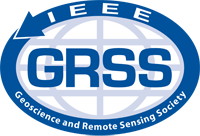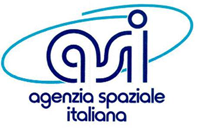HD-05: Hyperspectral Imaging Remote Sensing
Ronald Lockwood, Dimitris Manolakis, and Thomas Cooley
Sunday, July 26
08:30 - 12:30
Abstract:
The tutorial is designed to provide a complete introduction to the physics, phenomenology and exploitation techniques of imaging spectroscopy. The course covers sensor types, calibration, atmospheric effects and compensation, processing and analytic techniques in multiple examples covering reflective and emissive wavelength regimes. The course is structures with an Introduction (0.5h); Sensors-Data Collection-Calibration (2.0h); Signatures + atmospheric compensation techniques (1.5h), and Exploitation and mathematical techniques for hyperspectral data (2.0h).
Biography:
Ronald Lockwood is a member of the Technical Staff at MIT Lincoln Laboratory where he works on the technology development for imaging spectrometers and their characterization. Previously, he was the deputy principal investigator for the Advanced Responsive Tactically-Effective Military Imaging Spectrometer (ARTEMIS) and was responsible for sensor calibration and performance. He received his B.A. degree from Texas Tech University in physics and history and his M.S. and Ph.D. degrees from the University of Wisconsin-Madison in physics.
Dimitris Manolakis received his education (B.S. in physics and Ph.D. in electrical engineering) from the University of Athens, Greece. He is currently senior staff at MIT Lincoln Laboratory, in Lexington, Massachusetts. Previously, he was a Principal Member, Research Staff, at Riverside Research Institute. Dr. Manolakis has taught at the University of Athens, Northeastern University, Boston College, and Worcester Polytechnic Institute; and he is coauthor of the textbooks Digital Signal Processing: Principles, Algorithms, and Applications (Prentice-Hall, 2006, 4th ed.), Statistical and Adaptive Signal Processing (Artech House, 2005), and Applied Digital Signal Processing (Cambridge University Press, 2011). His research experience and interests include the areas of digital signal processing, adaptive filtering, array processing, pattern recognition, remote sensing, and time-series analysis.
Thomas Cooley is the lead for the AFRL Space ISR technology investments. He was the principal investigator of the ARTEMIS payload, a hyperspectral sensor to demonstrate the use of this rich data source for the wide range of hyperspectral applications, and the program manager for the TacSat-3 satellite launched in May of 2009. Dr. Cooley holds a B.S. in Electrical Engineering from Rensselaer Polytechnic Institute, an M.S. in Electrical Engineering and Applied Physics from the California Institute of Technology (Caltech), and a Ph.D. in Optical Sciences from the University of Arizona. Since 1995, he has been at the Air Force Research Laboratory, Space Vehicles Directorate.




